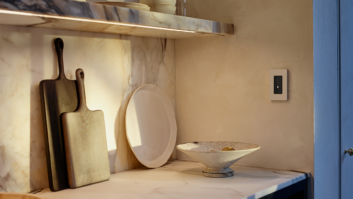To provide an accurate picture of today’s business trends and tomorrow’s technology expectations, Residential Systems, in partnership with CEDIA’s Management Conference committee, queried custom installation business owners and managers through an online survey earlier this year. The results of the survey provided insight into custom installation company growth strategies, operational practices and product selection concepts for 155 dealers located throughout North America.
Of those who responded to the survey, 35 percent said that they self-financed their company’s growth, while 22 percent rely on a line of credit, and another 22 percent utilize cash flow to grow their companies. In fact, when questioned about their company’s line of credit as a percent of gross sales, a surprising 34 percent said that they do not have a line of credit at all, while another 22 percent said that their line of credit is six to 10 percent of their gross sales and another 12 percent said that it’s more than 10 percent.
Kendall Robins, CEDIA Management Conference chairman, said that these contrasting percentages, if accurately reported, are indicators of how greatly cash flow can swing from month to month in custom installation companies working on large projects.
“Some companies will operate in a manner that the cash flow from operations just covers them, and they don’t need a line of credit at all,” Robins explained. “But, on the other hand, I would think that the companies that participate in larger jobs have the greater cash flow swings and will need a larger line of credit to cover tremendous cash outlays to buy gear or backup stock for a showroom in the middle of a job.”
Thirty-one percent of survey respondents claim that they hold advanced payments, almost like in escrow, to cover costs of just that one job, while another 21 percent said that their advanced payments go into a general fund that can be spent wherever needed in the company. Twenty-seven percent said that they often have to proceed with a job while still awaiting advanced payments, while only 11 percent were willing to stop work on a job until they received advanced payments. Ten percent said that they don’t take deposits at all.
Robins, who is also president of Home Media in Ketchum, Idaho, said he believes that proceeding without advanced payments can be detrimental to a company’s cash flow. Unfortunately, however, a lot of custom installation firms are forced into this position. “I know that we experience that dilemma here at my company,” Robins noted. “You get the job. The client gives you the greenlight right before everything has got to get going. Now you need the money, but for whatever reason the client can’t find their checkbook and off you go on your own nickel even though you usually take advanced payments.”
Robins acknowledged that while it is generally unacceptable to proceed without collecting advanced payments first, high-volume businesses such as alarm installation companies can usually pull it off as long as they collect final payment in a timely fashion.
When questioned about their selection process for the products that they sell, 69 percent of survey respondents said that they analyze many parameters about the product, price and company from whom they are buying products, while 20 percent base their decision solely on price and product performance. Eight percent said that they don’t really change their product mix, because their loyalties are very strong.
For 65 percent of companies that responded to the Residential Systems/CEDIA survey, a company president or general manager makes all product decisions for the custom installation company, while 23 percent said that a group of people is assigned to the task. Only eight percent have a technical manager make those decisions, and five percent rely of their sales manager to do it. When it comes to managing projects, 48 percent of respondents said that they depend on their project manager, while 36 percent still count on the owner for that role.
To assess the caliber of participating companies owner/managers in the survey, they were asked if they had a demo room/theater of the premises. Sixty-four percent said that they did, another 66 percent said that they ran custom-only firms, and 34 percent considered themselves retail/custom hybrids. Indicating a diversity of their technical capabilities, 74 percent of respondents admitted to working on commercial/industrial installations while 71 percent said that home networking represents as much as 20 percent of their current sales, and another 14 percent said it was 20-40 percent of their sales. By comparison, a little more than half of respondents said that security products represent one to 20 percent of current sales, while 35 percent said that they sell no security products at all.
When it comes to employee retention, 28 percent said that they’ve been fortunate enough to have not yet lost a member of their staff, while another 28 percent said that when they do leave, their employees generally go to work in another industry. Twenty-five percent said that employees leave at the promise of better pay or opportunity from a competitor and 18 percent said they leave to start their own installation business.
To make their company a good place for their employees to work, 25 percent said that they conduct yearly/bi-yearly performance reviews, in writing, to each employee. Twenty-four percent said that a performance review is negotiated in a two-way exchange with their employee, while 18 percent use a reward system for above-average performance.
An impressive 70 percent of respondents said that they were satisfied with the competency and effectiveness of their employees. For those who found shortcomings in their staff, 22 percent said that the main problem was that their employees don’t work “smart.” Sixteen percent said that their employees take too long doing a given task, while 11 percent said that these employees act or speak inappropriately in front of clients. Only three percent believed that their under-performing employees don’t work hard enough.
To address these shortcomings, 34 percent of survey respondents said that they plan to find different ways to motivate their employees. Thirty-two percent plan to provide more/better training and 27 percent will try to hold their employees more accountable for their lack of performance.
Jeremy J. Glowacki is editor of Residential Systems magazine in New York City.







